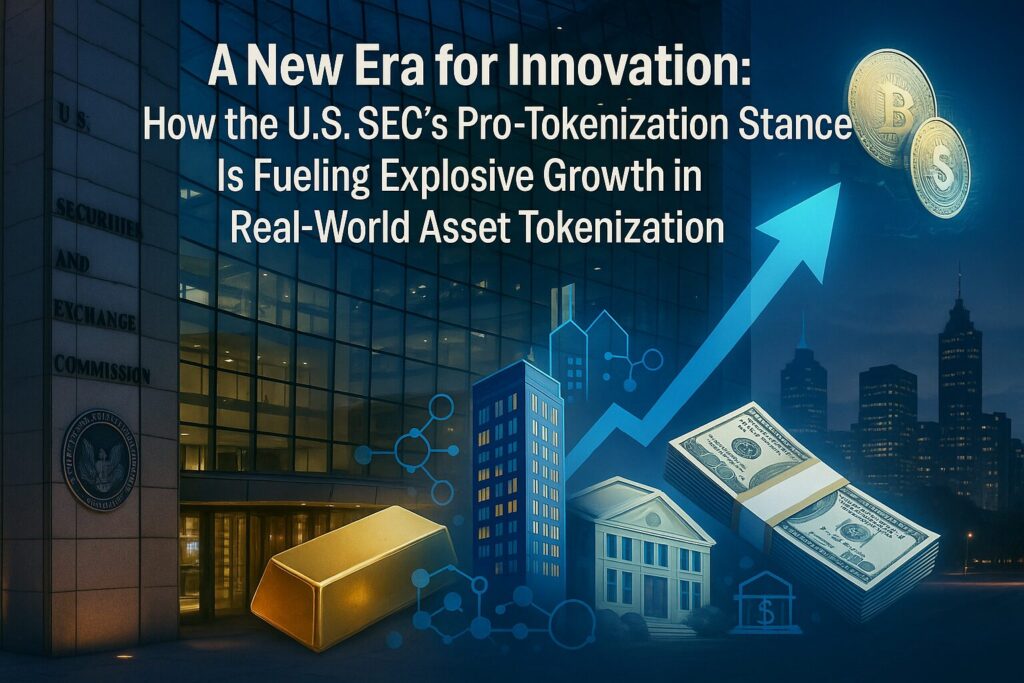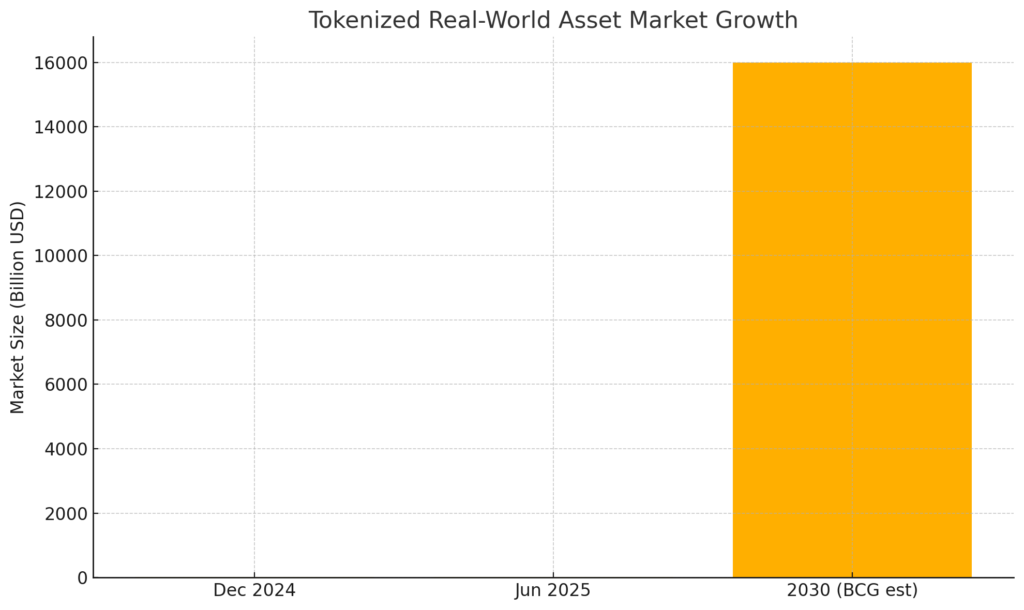
Main Points:
- Regulatory Shift: Under Chairman Paul Atkins, the SEC has moved from “regulation by enforcement” to a transparent, innovation-friendly approach.
- Tokenization as Innovation: Tokenization is now officially viewed as a tool to advance capital formation and market efficiency.
- Surging RWA Market: The tokenized real-world asset (RWA) market grew from $15.2 billion in December 2024 to over $24 billion by June 2025—an 85% year-over-year jump.
- Institutional Adoption: Major players, including Binance Research, World Economic Forum, JP Morgan, and standard-setting bodies, are prioritizing tokenization projects.
- Future Outlook: Projections suggest the market could swell to $16 trillion by 2030, unlocking new revenue streams and democratizing access to high-value assets.
A New Dawn for SEC Policy
From Enforcement to Engagement
When President Trump’s nominee Paul Atkins took the helm of the U.S. Securities and Exchange Commission on April 15, 2025, he ushered in a marked departure from his predecessors’ opaque, enforcement-by-action strategies. In a CNBC interview, Atkins proudly declared, “Tokenization is innovation. The SEC’s focus should be on how to advance market innovation” (Source: BTCTN). By replacing “ambiguous laws” and “regulation by enforcement” with clear, principle-based guidance, the SEC aims to provide a stable foundation for launching novel tokenized products.
Transparency and Capital Formation
Atkins has emphasized that regulatory certainty is as crucial as regulatory oversight. “My goal is to ensure transparency from a regulatory standpoint so people can innovate with confidence and bring new products to market,” he stated. This aligns directly with the SEC’s long-standing mission to promote capital formation—empowering startups, SMEs, and institutional issuers to tap blockchain’s efficiencies and raise funds more efficiently.
Accelerating RWA Tokenization Growth
Market Size Explosion
According to the June 2025 “Real-World Assets in On-chain Finance Report,” the tokenized RWA market surged from $15.2 billion at the end of 2024 to over $24 billion by mid-2025—an impressive 85% increase in just six months. CoinDesk similarly reported that this 380% growth over three years underscores traditional finance’s embrace of blockchain.
Graphical Trends

(See chart above.)
Institutional Momentum
Reports and Projections
- RedStone & Partners: The RedStone-Gauntlet-RWA.xyz report highlights the maturation of tokenization from pilot to production scale and notes projections by Standard Chartered that the RWA market could reach $30 trillion by 2034.
- BCG Forecasts: Boston Consulting Group estimates tokenization could soar to $16 trillion by 2030, reflecting growing institutional confidence.
- World Economic Forum: The WEF regards tokenization as a critical bridge between traditional finance and blockchain, with potential to redefine global financial architecture.
Industry Initiatives
- Binance Research: Cited the U.S. regulatory pivot as a key driver for tokenization’s ascendance in crypto adoption.
- JP Morgan Chase: Through its Kinexys arm, exploring carbon-credit tokenization alongside S&P Global Commodity Insights and other registries.
- ETF Approvals: The SEC greenlit the first U.S. Solana (SOL) staking ETF in April 2025, enabling investors to earn yields on SOL holdings.
Looking Ahead: Opportunities & Challenges
Unlocking New Asset Classes
Tokenization democratizes access to assets like private credit, real estate, and carbon credits by enabling fractional ownership and programmable features (e.g., automated payouts). For crypto investors hunting the next revenue source, tokenized RWAs offer exposure to yields historically reserved for large institutions.
Regulatory and Operational Hurdles
Despite regulatory progress in the U.S., token issuers still face licensing hurdles, compliance costs, and questions around custody and interoperability. Market participants must build robust governance models and infrastructure to ensure trust and scalability.
Strategic Imperatives for Investors
- Identify platforms with strong regulatory alignment (e.g., compliant security token offerings).
- Diversify across asset classes: private credit, treasuries, real estate, and emerging sectors like carbon credits.
- Monitor regulatory developments in key jurisdictions (U.S. GENIUS Act, Europe’s MiCA).
Conclusion:
The SEC’s decisive pivot toward embracing tokenization marks a watershed in U.S. crypto regulation. Coupled with explosive market growth—from $15.2 billion in late 2024 to $24 billion by mid-2025—and bullish institutional forecasts, tokenized RWAs stand poised to transform how capital is raised, traded, and democratized. For investors and innovators, this confluence of regulatory clarity and technological maturity opens the door to novel revenue streams and practical blockchain use cases—ushering in a truly new era of financial innovation.

